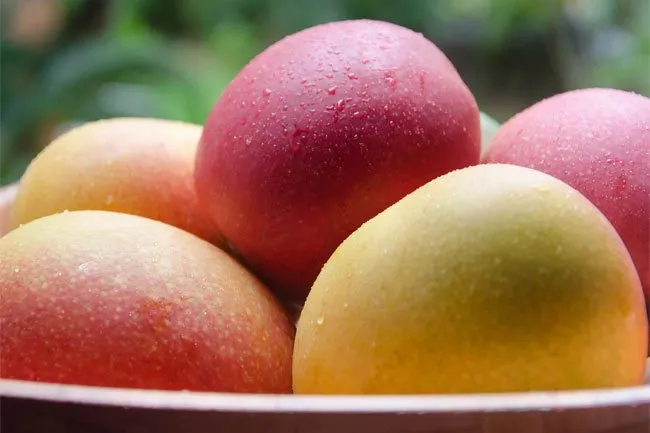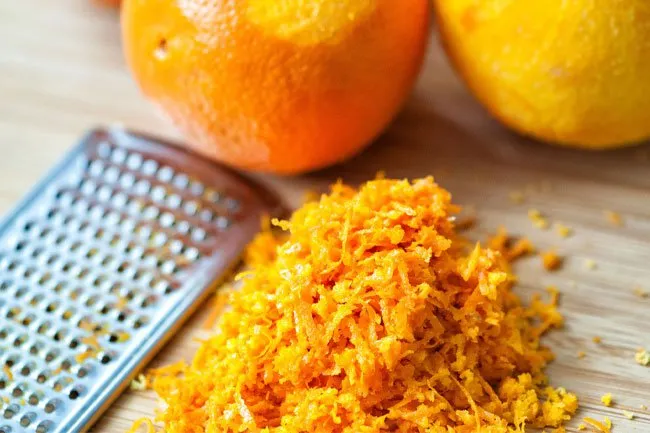Potato

Although you might be more interested in what's inside the potato, its skin has fiber and tons of nutrients, like vitamins B and C, potassium, calcium, and iron.
Peach

The fuzzy skin on peaches is packed with antioxidants and vitamins. Not only that, it has lots of dietary fiber, too. Peach skin has loads of vitamin A. There are also carotenoids -- a kind of antioxidant and provitamin -- in peach skin. These could help lessen your chances of cataracts. You'll be getting a good amount of fiber too, which helps your body digest food.
Eggplant

An eggplant's skin has lots of antioxidants. This is especially true for eggplant varieties that are darker in color. For example, purple eggplant varieties will have more nutrients in their skin than the white varieties. You may find an eggplant's skin a little too chewy to eat.
Watermelon

Watermelon rinds have an amino acid called citrulline. It can help get rid of nitrogen in your blood and can also help ease pain if you have sore muscles. In fact, the rind has more citrulline than the juicy flesh. If you're not keen on eating the rind raw, there are other ways to prepare and eat it. You can pickle it, juice it, or stir fry it like a vegetable.
Apple

Interestingly, apple peels have more vitamins and fiber than what's inside. Fiber is helpful for stopping cholesterol buildup in your blood vessels. There's also an antioxidant called quercetin that can help your brain and lungs work better.
Cucumber

Most of a cucumber's nutrients are in its dark green outer skin. It has lots of potassium, antioxidants, and fiber. The skin is also rich in vitamin K, a nutrient that supports bone health and blood clotting. But if the cucumber you want to eat isn't organic and it has a heavy waxed coating, you might want to peel it anyway.
Mango

Poison ivy has a chemical called urushiol. It's what causes the itchy rash for most people who come in contact with it. Mangos have that same chemical, mostly in the skin. If you don't get a rash from poison ivy, great news -- the skin of a mango is chock-full of dietary fiber. It's also packed with vitamins E and C, antioxidants, polyphenols, and carotenoids. On top of that, it has polyunsaturated fatty acids and both omega-3 and omega-6.
Kiwi

Kiwis have fuzzy, tough skin, but don't let that stop you. You can scrape off the fuzz if you don't like it. If you do eat the skin, you'll get antioxidants, flavonoids (plant chemicals), and vitamin C. In fact, the skin has more of those nutrients than the inside does.
Zucchini

Zucchini peels can taste a little bitter, but they're extremely nutritious. You'll get fiber, potassium, and some extra vitamin C. The skin of a zucchini also has loads of antioxidants, like lutein, carotenoids, and zeaxanthin. You can reap the benefits of this veggie skin by combining them with other flavors, like in a salad, or by cooking them.
Banana

Bananas have a peel that's tough to eat and tastes bitter. Still, the peel has some great health benefits. It has potassium and antioxidants, like lutein. Lutein is good for eye health. Banana peels also have something called tryptophan, an amino acid. Since the skin is tough and bitter, you can boil it for a few minutes, then bake in the oven to dry it out for a tea or a smoothie.
Orange

Orange peels have an incredible amount of vitamin C -- twice the amount that's inside the fruit. They're also packed with vitamin B6, calcium, potassium, magnesium, and riboflavin (a B vitamin). Orange peels are hard to digest and they can be bitter. So, use a grater to make orange zest. You can zest in salad dressings or sprinkle it directly on top of a salad. The flavor of the zest also goes well with chocolate and ice cream.
Diet and Nutrition: Fruit and Veggie Skins You Can Eat
This tool does not provide medical advice. See additional information: 
© 1996-2024 WebMD, LLC. All rights reserved.
Source slideshow on WebMD